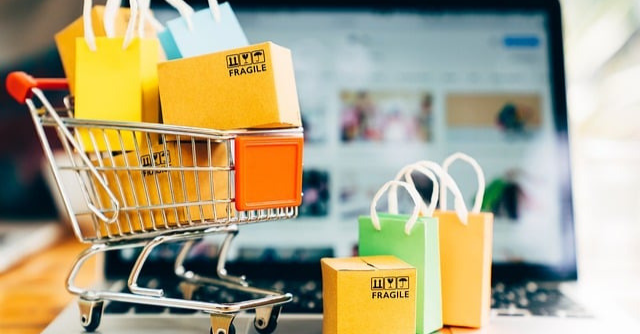
India's e-commerce market to hit $325 billion by 2030


The e-commerce market in India is projected to grow significantly, reaching over $325 billion by 2030, as the nation's digital economy is expected to reach over $800 billion by the same time, according to a report published on Sunday by market research firm Invest India.
Currently valued at $70 billion, India's online shopping makes up approximately 7% of the country's total retail market, therefore presenting a huge opportunity for growth. In the coming years, several factors, like high internet penetration, low-cost internet services, and a substantial increase in rural smartphone users, are expected to propel the sector towards a promising future.
Internet penetration in India has also seen significant growth, with 52% of the population, equivalent to approximately 759 million people, accessing the internet in 2022.

An estimated 87% of Indian households are expected to have internet connections by 2025. Additionally, the duration of internet access through mobile devices has seen a 21% increase compared to 2019.
The number of online shoppers in India is projected to rise, with a compound annual growth rate (CAGR) of 22% to 88 million in rural areas and 15% to 263 million in urban areas between 2019 and 2026. The report projects that India's online shopper base is set to become the second largest globally by 2030, with nearly 500-600 million shoppers.
According to a report in Forbes published earlier this month, India's e-commerce sector is expected to reach ₹4,416.68 billion in 2024, with an annual growth rate of 11.45% to reach ₹7,591.94 billion by 2029. Market research firm Mordor Intelligence estimates the India E-Commerce Market size at $112.93 billion in 2024 and is expected to reach $299.01 billion by 2029.

The future of e-commerce in India will see a surge in innovation and the adoption of advanced technologies. Artificial intelligence (AI), machine learning (ML), and big data analytics will play pivotal roles in enhancing customer experiences, personalisation, supply chain management, and fraud prevention.
The government is backing technologies such as UPI, RuPay, DigiLocker, and eKYC to help promote digital transactions, increase their adoption in smaller cities, as well we to drive innovation in this space. The Unified Payments Interface (UPI) for example, has emerged as a significant player in digital payments, accounting for $1.5 trillion in transactions in 2022. By 2026, it is anticipated that 81% of India's population will have access to smartphones. Digital infrastructure such as UPI, e-KYC, and Aadhaar has reduced consumer onboarding time by 80%, enhancing the digital experience, it said.
The surge in availability of local language and mobile-first content has resulted in approximately 73% of India's internet subscribers using Indian languages. This has led to an estimated regional language base of 540 million, creating a market size of $53 billion.

India's quick commerce market is projected to reach a market size of $5.5 billion by 2025 in hyperlocal mobility. Leading companies like Swiggy and Zomato are introducing new micro-segments such as car-pooling and e-scooter rentals. The health tech sector is expected to witness a twofold growth in preventive healthcare by 2025, creating significant job opportunities.
Social commerce, a new trend that uses social networks and digital media to connect buyers and sellers, is also projected to achieve a market size of $70 billion by 2030, with small video applications gaining significant popularity.
Key mergers and acquisitions in the e-commerce sector have been noteworthy, with companies like Zomato and PhonePe making strategic moves to strengthen their positions, as per the report.

